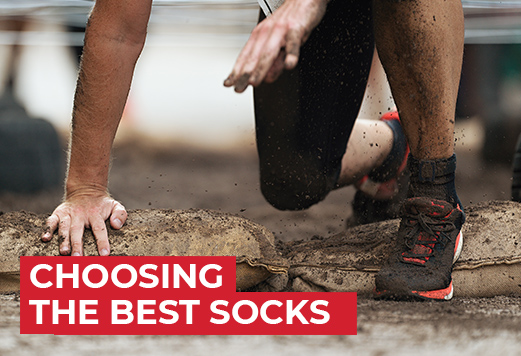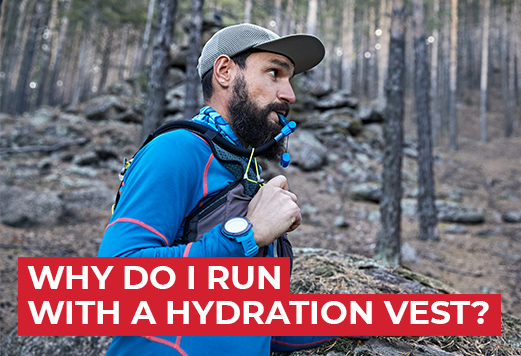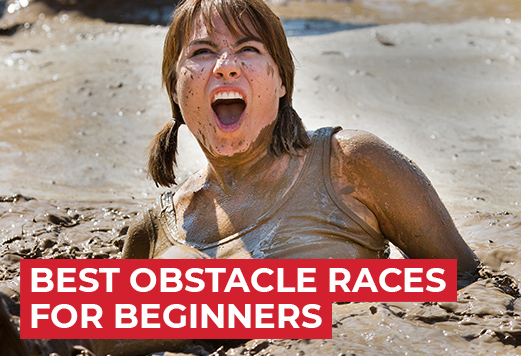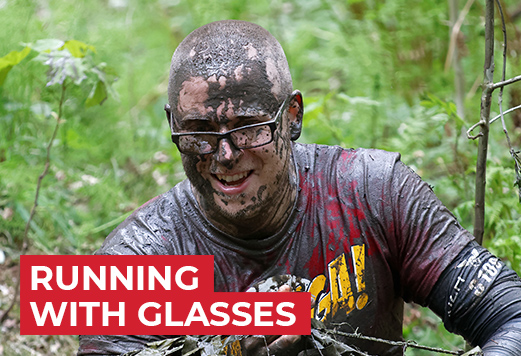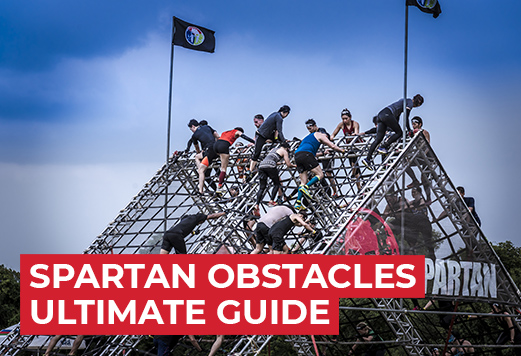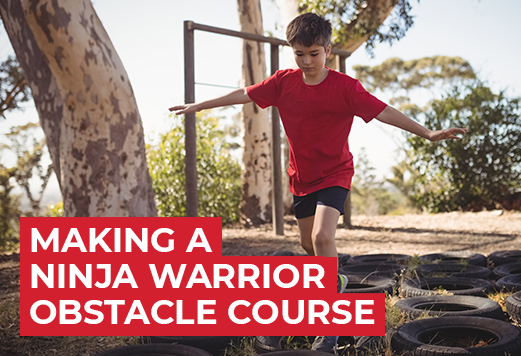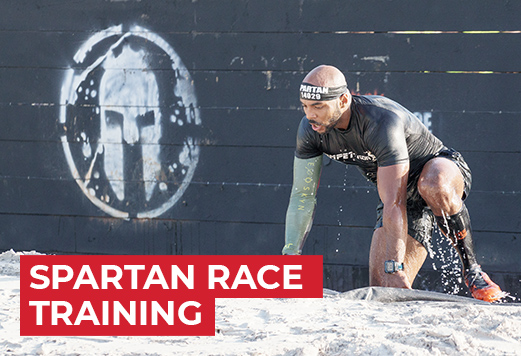The Best Running Hydration Pack That Money Can Buy
Seeking for the best hydration pack for running? I have tested several options, from the hydration vest to the backpack, here are my recommendations.
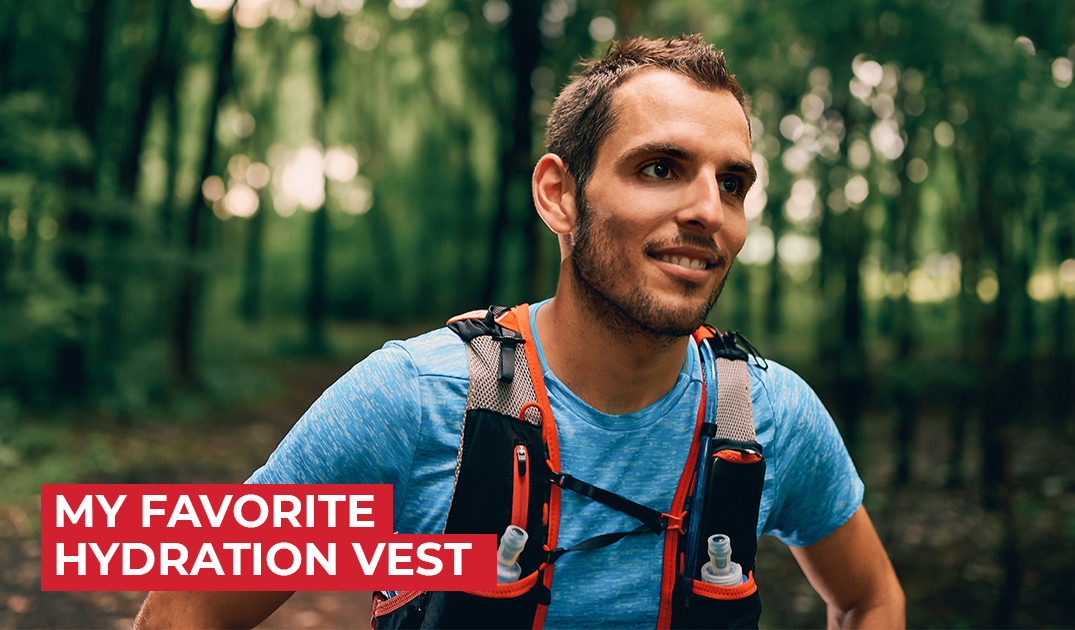

The best hydration pack a runner could get is a hydration vest that can hold soft bottles in the front, while also incorporating a bladder and hose system. It must have convenient pockets in the front and enough storage capacity in the back. This type of hydration pack is ideal for an obstacle race such as Spartan Race or Tough Mudder, but also trail running. Depending on your the duration of your run, consider the following options.
After reading this buying guide, you will know exactly which hydration system is the best for you.

Best hydration pack for running
Salomon Advanced Skin 12
This vest is all about practicality. It can hold everything you need, where you need it. Precisely wrapping around your body, It feels like wearing a custom made vest.
The Salomon Advanced Skin 12 is the most advanced and comfortable hydration vest money can buy.
Highlights:
- Form-fitting design and extremely adjustable
- Elastic and fast wicking fabrics
- Double mesh back panel with a thin layer of foam
- 3D Air Mesh
- No chaffing spots
- Loads of pockets
- Comes with 2 soft bottles (500 ml each)
- Can hold a 1.5-liter bladder in the back
- 2.5 liters capacity in total
- Removable insulated foil sleeve for the water bladder
- Trekking poles straps
- Multiple colors options
Considerations:
Hydration system: This Salomon vest (link to Amazon) comes with the 2 bottles, but the bladder and hose system is not included.
Breathability: Even with the extra thin and breathable fabric, some runners have found this vest too warmth to run in hot weather.
Suitable for:
- Obstacle racing
- Trail running
- Long run in remote areas
- Summer and winter run
Features:
Fit: The "Sensifit" design from Salamon is meant to wrap around your torso without restraining movements.
Materials: The fabric is flexible, breathable, and dry quickly. Also, every possible chafing spot has been made extra smooth for your comfort. The inside of the vest is soft enough to be worn shirtless.
Pockets: This Salamon vest (link to Amazon) has all the pockets you could possibly need, and they are easily accessible.
- 2 front elastic pockets (ex: for water bottles)
- 1 mobile pocket (ex: for food)
- 2 side zipped pockets (ex: for car keys or energy gels)
- 1 kangaroo pocket (ex: for gloves)
- 1 internal pocket (ex: for your phone or wallet)
- 1 massive back compartment (ex: for extra clothing)
- 1 chest pocket (ex: for energy gels)
Water capacity: This hydration vest come with 2 soft bottles (500 ml each) that fit in the front pockets, and you can also buy the 1.5-liter bladder and hose system. In total, the vest as a 2.5 liters capacity.
Bladder and hose: The vest comes with an insulated foil sleeve for the water bladder. A sliding rail system is employed to open and close the reservoir.
Straps: The straps are pretty straightforward to use and can be manipulated in the dark or on the fly. Everything is adjustable to custom fit the shape of your body. Also, the trail runners appreciate the trekking poles straps.
Styles: Comes in multiple colors options (red, purple, blue, and more.)
Back panel: The rear panel is made from a dual mesh panel with a thin layer of foam in between.
Ventilation and breathability: The air mesh does a fantastic job of keeping your body fresh, particularly during hot summer days.
For all the details, check the Salomon Advanced Skin 12 on Amazon here.
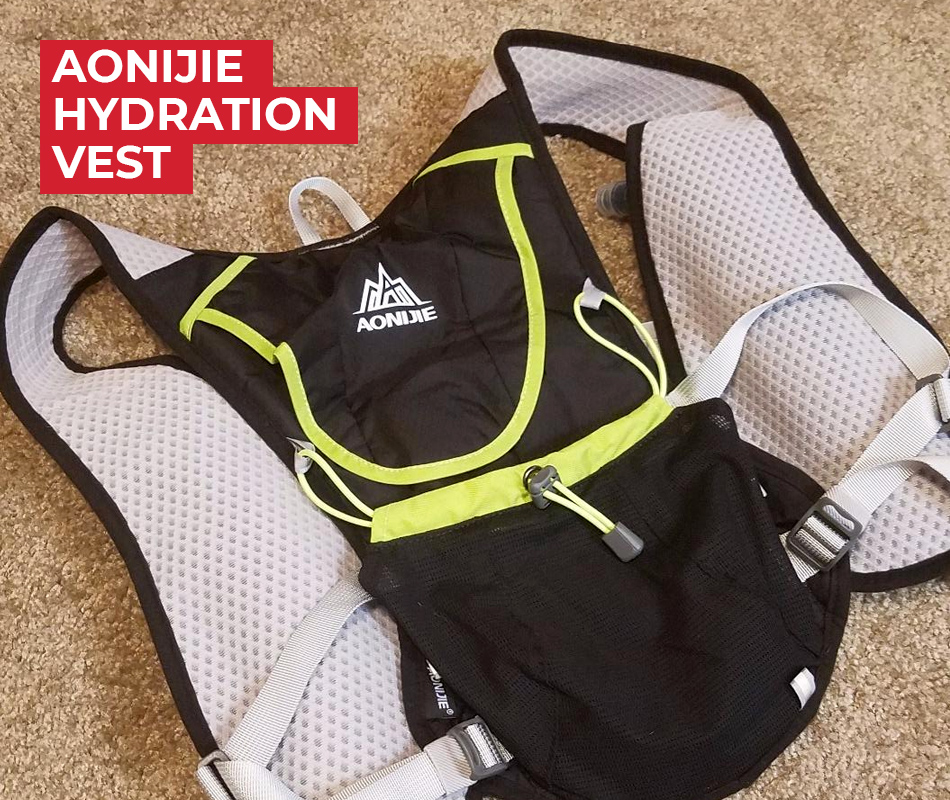
Best hydration pack under $50
Aonijie Hydration Vest
When you are a runner on a budget, like me, you are probably looking for the best alternative to the premium product. Therefore, I have found the best hydration vest you could buy under $50.
The Aonijie Hydration Vest as (almost) every features the big brand offers, but for a fraction of the price.
Definitely an excellent option for the beginner or the ultra-runner who need a second hydration vest.
Highlights:
- Comes with 2 front bottles (250ml each)
- Can hold a 1.5 Litter bladder
- Compatible with a Camelback reservoir
- Comfortable fit
- Prevents bouncing and chaffing
- Made from polyester mesh with velour edging
- Wide shoulder straps made of breathable mesh
- Lots of pockets and storage capacity
- Waterproof fabric
- Reflective tabs for night runs
- 18 months guaranty
Considerations:
Bladder and hose: The bladder and hose system is not included.
Suitable for:
- Obstacle race
- Trail Running
- Running
- Hiking
Features:
Hydration system: This hydration vest (link to Amazon) comes with 2 front bottles (250ml each) and can accommodate a water bladder in the back.
Bladder and hose: The backpack can hold a 1.5 Litter bladder, and the system is compatible with a Camelback reservoir. Quickly accessible and easily refilled through the back panel. Plus, the hose can be fixed along the vest to prevent bouncing around while you run.
Fit: The vest can be tailored to your body for a comfortable fit and prevents chaffing.
Ventilation and breathability: Made from polyester mesh with velour edging. The fabric is soft and dry quickly to prevent irritation. Also, the shoulder straps are wide and composed of breathable mesh.
Pockets and storage capacity: With all the different pockets available, you can carry everything you need (water bottle, phone, race fuel, raincoat, etc.). The pockets are located where you need them, and they are easily maneuverable.
Straps: Multiple straps are adjustable to get the comfortable fit you want without having to readjust along the run.
Durability: The vest is solidly built with a waterproof fabric.
For all the details, check the Aonijie Hydration Vest on Amazon here.

Best hydration pack for the long run and hiking
CamelBak Ratchet Hydration Pack
The brand CamelBak is an icon in the outdoor department. It's the Kodak of the hydration pack. The name is so famous that many people are referring to a hydration pack as a camelback (Camelbak). They have achieved such fame by making high-quality hydration packs for years.
This top-rated hydration pack is particularly useful for a long run during a hot day. The 3 liters water bladder can last for more than 3 hours. Some hikers are also carrying this model for their all-day adventure in the trails and mountains.
Here's why this is the best hydration pack for hiking and long run!
Highlights:
- 3 liters reservoir (100 oz.)
- Best bladder and hose system on the market
- Made of breathable fabric
- Everything is adjustable
- Reflective bands
- Lightweight (170 g / 5 oz)
Considerations:
Pockets: No front pockets
Storage capacity: Somewhat limited
Suitable for:
- Long run
- Hiking
- Cycling
Features:
Water capacity: The 3 litter reservoir (100 oz.) is more than enough for the +3 hours run. You can definitely stretch that much water for a 6-8 hours hike.
Bladder and hose: The bladder and hose system of this CamelBak hydration pack (link to Amazon) is one of the best on the market. The straw delivers more water per sip than the competition, plus the on/off lever prevents water from leaking over your outfit. The reservoir is easy to access and remove from the backpack.
Ventilation and breathability: The hydration pack is made of lightweight and breathable fabric. Plus, the sides are entirely open for better ventilation.
Straps: The shoulder straps are composed of breathable and soft mesh. Everything is adjustable to prevent the backpack from bouncing.
Durability: Made of quality fabric, this CamelBak is meant for the outdoor challenge.
For all the details, check the CamelBak Ratchet Hydration Pack on Amazon here.

Hydration pack buying guide
When I shop for a new hydration system, I always make sure it meets the following criteria. Especially if you plan on wearing this hydration system in a race, you'll need most of those features.
14 Important features for a hydration pack:
1. Hydration system
The principal mission of a hydration pack is to carry water, but not every hydration packs are made the same. There are 2 different hydration systems you should consider; the bladder system or the bottles.
The most common system, usually called a hydration pack or backpack, has a bladder and a long hose, mounted inside the bag. This system contains plenty of water, and it's (almost) hands-free to operate.
The other variant is the hydration vest, which has bottles or soft flasks, mounted over the chest area. Those bottles contain a fraction of what a bladder can hold, but they are effortless to drink from and refill.
A solid running hydration pack, also have pockets for front bottles. This set-up is ideal for stocking different kinds of refreshments, like water and sports drinks.
On the other hand, not all hydration vest have the bladder and hose system. Therefore, the hydration vest with only bottles can hold less water and needs to be refilled more often than the hydration bladder. In my opinion, the bottles only system is not optimal for the long run in a remote area or race with few water stations along the course.
2. Bladder and hose
When choosing a hydration pack, consider the design of the bladder and hose, because it's essential to get an easy-to-use and easy-to-clean hydration system.
The well-known brand, CamelBak, have bladders equipped with large twist caps, which is very easy-to-use and durable. However, other companies have replicated the design of the bladder, and it's not always a 100% seal tight. I have bought one of those cheap imitations, and while I was running the cap was leaking all over the backpack.
In my opinion, the best system is the one you have to flip the edge of the blader and slide it into a rail. This method won't fail, and it's so easy to use.
The hose is attached at the bottom of the bladder and stretches over your shoulder to your mouth. At first, drinking from the nozzle feel a little be weird, but you'll get used to it. The only thing you should look for is a closing mechanism because, without it, the tip of the hose could be leaking over your shirt, especially when running.
Also, the hose should be run through the fabric or have multiple attach point, so it won't bounce and become annoying after a mile.
Finally, the bladder must be accessible and easy to refill. It's especially important during a race where every minute count.
3. Water capacity
Depending on the type of race you are running, you'll need to define how much water to carry. From my experience, a small bottle of water is not enough to stay hydrated for a Spartan Race or any other obstacle races.
Here's a chart to help you choose:
The 1-liter reservoir is sufficient for all short run under 5k (3 miles), and you'll have a water supply that can last around 1h20.
My favorite size is the 2 liters reservoir, which is more than enough for every race I do (Spartan Super, Beast, Half-Marathon, etc.). There's plenty of water to stay hydrated for 2h40, and it's not too heavy to carry during a race.
Running or hiking in a remote area with no water station required more water and I would choose the 3 or 4 liters reservoir. Almost sufficient for the whole day, those large hydration backpacks can contain up to 20 liters of liquid.
However, you must consider the weight of the full bladder, which is around 2 pounds per liter. This is why I prefer the 1 or 2 litters reservoir for running.
4. Ventilation and breathability
It's inevitable, running with a backpack eventually cause sweat to accumulate on your back and create irritation. The design and the materials of the hydration pack are critical because of a lack of breathability and ventilation become painful after a while.
The best materials would be a balance between breathable mesh that allows the air to flow correctly and a water-resistant fabric that prevents the rain or muddy water from leaking inside the backpack.
Furthermore, the perfect fabric would also be resistant to heat, by stopping it form been absorbed. This is why the colors can also have an impact because dark colors tend to absorb heat, and light colors will reflect it.
5. Back panel
While running, the heat mainly builds between your back and the hydration pack, which inevitably start rubbing on your skin.
Therefore, it's essential to have a padded back panel covered with smooth fabric. It has to be comfortable; otherwise, it will become an extra challenge to carry.
6. Size
The capacity of the bladder affects the overall size of the hydration pack. The bigger the reservoir, the larger the backpack and the heavier it is to carry. Also, the bigger the bag, the more heat, and sweat will accumulate on your back.
Therefore, you should aim at the smaller backpack possible. Little enough so it won't bounce all over the place while you run. Still, you must consider the room available for other items, such as energy gels, phone, and car key.
From my experience, during a race, you won't need much storage since it's preferable to avoid overloading your backpack.
7. Weight
Besides the items inside the backpack, consider the weight of the hydration pack itself and the water reservoir.
Most running hydration packs are made of lightweight materials, and it's mostly the liquid inside the bladder that adds considerable weight on your back. Keep in mind that 1 liter of water equals 2 extra pounds to carry.
Aim for the most lightweight option to avoid putting useless stress on your shoulder along the run. You'll be carrying this bag for a certain distance, and the extra weight can undoubtedly impact your performance. The vest is equipped with a straps system that distributes the load on your back and shoulder.
Hoverer, you must take into account that lightweight material tends to be less durable than heavy military-grade fabric. Simply, be more gentle while you take off the hydration vest, and avoid rubbing your back again the rocks or the trees.
8. Fit / Form-Fitting
The fit of the hydration pack is directly linked to its comfort, and your posture shouldn't change when you put it on. The vest must wrap around your torso and be as tight as possible to avoid bouncing and rubbing.
Place the bag centered on your shoulders, and adjust the straps to obtain a snug fit. You also have the chest strap to help achieve the perfect fit and be comfortable.
9. Comfort
The idea behind a hydration vest is to facilitate access to water and food while you are running. However, it won't be as convenient if it becomes annoying after 30 minutes.
When looking at hydration packs, you'll find countless bulky options with lots of storage, more like a backpack. Those options are great for hiking, but not suitable for running. Especially for an obstacle race, where you perform all kind of full range movements.
For runners, the best hydration pack are made of light and stretchy materials. It perfectly fits around your body, to a point where it feels like wearing nothing at all.
Also, the numerous adjustable straps are essential to achieve maximum comfort.
10. Straps
The adjustable straps are crucial to obtain an ideal fit. There is 3 kind of straps, and each one plays an essential role in your comfort.
The shoulder straps are the one you can find on any type of backpack. They help distribute the weight on your shoulders. However, not all shoulders straps are made equal. The running hydration packs are equipped with wide and padded straps. Stay away from the thin straps, because they tend to rub and provoke irritation.
The chest straps make the difference between an everyday bag or a running backpack. Those straps distribute the weight from the shoulders to your chest. They are adjustable like the shoulder straps, but they can be easily unclipped. Also, an elastic section help to adjust the tension along with your movements. Without this flexible feature, it won't feel as comfortable.
Finally, the waist straps help secure the bottom of the backpack. Like the chest straps, they have an elastic section to adjust to your movements freely.
11. Pockets and storage capacity
The location of the pockets is essential, and most hydration vests have a similar configuration, especially for the pockets located on the shoulder straps. However, the regular hydration pack tends to have fewer pockets than the running vest.
Located on your chest, those pockets are useful to keep your energy gels and salt tablets accessible while running. Some runners will use them to put soft water bottles filled with sports drinks.
Some hydration vests also have extra large pockets on the bottom of the front panels or on the side.
The front pocket must be very accessible, and you should be able to get your fingers inside with having to look. Therefore, the buttons or snaps are not the best methods to keep them close. I prefer the elastic band or the zipper because it's super easy to operate, and it keeps everything safe in place while I stay focus on the trail.
Moreover, I like to have a zipper pocket inside the back opening. I use this pocket to store my car keys and cash.
Besides all those small front pockets, it's also useful to have a big pocket in the back. Deep enough so you could stuff a rain jacket inside for example.
12. Durability
Runners are really testing the durability of their gear during obstacle racing and trail running.
Therefore it's crucial to get a resistant hydration pack. The fabric and the design must be immune to wear and tear, while also be water-resistant. Because water damage can significantly accelerate the deterioration of the backpack.
Furthermore, the hydration bladder and its connections must be extremely robust to take the intensity of your run. A cheap bladder is susceptible to leakage, and this could become very problematic in the middle of a race.
13. Price
The price for a hydration pack could vary from $30 to $300, and it can be difficult to tell the difference between a viable or terrible option.
It's tempting to buy the cheapest options, but a faulty hydration system will seriously affect your performance and could lead to dropping out of a race.
When you invest that much time and effort into running, you must invest in your success. Spending a little extra to get the high-quality hydration pack is entirely worth the money.
If you don't have the money to go with the well-known brand, check out my recommendation of hydration pack under $50.
14. Style
In my opinion, style is also an essential factor to consider when choosing a hydration pack.
Don't get me wrong, I don't grant any importance to what the other runner think of my running outfit. However, I don't always have the impulse to go for a run, and sometimes I need the extra motivation. I found that when I wear my favorite running outfit or if I have new shoes, the motivation comes easily.
Most brands offer different color variations, and I'm sure you can find your favorite color or go with the classic-fit-with-everything black option.
Hydration pack FAQ
Here are the answers to the questions I get the most about hydration pack.
How do I clean my hydration pack?
You can create your own cleaning solution by mixing 2 tablespoons of baking soda, and hot water or vinegar.
Pour the solution inside the bladder and shake it. Make sure the cleaning solution goes inside the hose too. Let it rest for 30 minutes and rinse with clean water.
Allow the reservoir to dry completely. Place the reservoir upside down, and make sure it doesn't close on itself.
How often should I clean my hydration pack?
There no specific rule when it comes to the frequency of cleaning the bladder. The manufacturer recommends a weekly clean up, but most runners are doing it once or twice per year.
Maybe it's really disgusting, or perhaps I have an excellent immune system, but I have never done a full clean up in the past 2 years. However, I rinse it and let it dry every time. I don't let the liquid sit inside for too long.
How do you fill a hydration pack?
Pull the bladder out of the backpack and open it. Hold the bladder with both hands under the faucet. When it's full, close the opening and slide the bladder back inside the hydration pack.
Do hydration packs keep water cold?
No, hydration packs don't keep the water cold! However, some plastic bladders are made of thicker materials that keep to water cold for a longer time.
Also, the materials used in the back panel can help to stop the heat coming from your body from being transfer to the water reservoir. Some manufacturers include a thermal sleeve to put the bladder inside.
Don't put the bladder in the freezer, because the water tends to expand when frozen and the ice could damage the connections of the hydration system.
Takeaway
The essential features, a runner could want from a hydration vest is a snugly fit, breathable fabric, front pockets, and the possibility to add a bladder system in the back.
The size of the bladder depends on the duration of your activities. For example, if you go for a short run, the front bottles or a 1-liter bladder is more than enough. However, if you usually go for long runs or hikes in a remote area with no access to water, I would recommend you get this 3 litter blader system.
The most versatile hydration vest you could get is the Salomon Advanced Skin, because it as all the feature you need, plus it can contain up to 2.5 liters of liquid. If you are on a limited budget, you could also go with the Aonijie Hydration vest, which is an excellent alternative to the Salamon. These are all great options with excellent reviews.
This new hydration pack will become your best running partner.
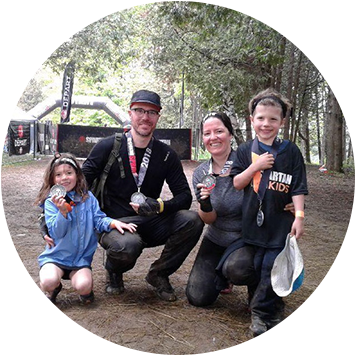
Thank you for reading!
Hi, I'm the Obstacle Ninja, and I will share with you my tips on how to crush it at your next obstacle racing. Also, how to get your little ninja more active with obstacle course. Want to know more about me? Read my story!

Hi, I'm the Obstacle Ninja, and my passion is OCR (obstacle course running).
My idea of the perfect weekend is to run a Spartan Race or Tough Mudder with my family. We love to run in the mud and challenge your self with the obstacle. My kids and I, we love to watch Ninja warrior and train for our next obstacle race or mud run.
I will share with you my tips on how to crush it at your next obstacle racing. Also, how to get your little ninja more active with obstacle course.
Want to know more about me?
Read my story!
Got questions? Contact me!
